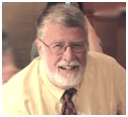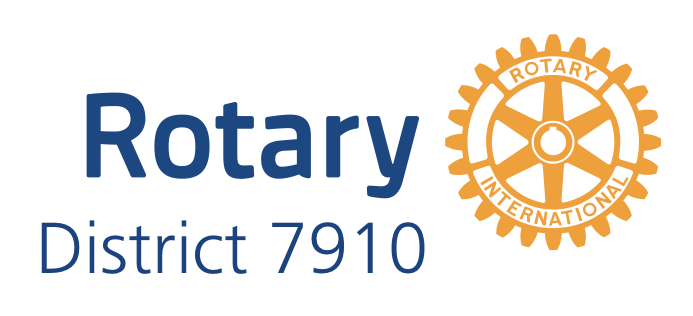Ron Goodenow Essay 6-January-2017
Rotary Has a Polio-Prevention Victory - But Huge Post-Polio Challenges Lie Ahead
By Ron Goodenow
 As a 12-year-old polio victim in the early 1950s, I faced isolation, closed school doors, and bullying, including a common use of the circular motions recently used by the now president of the U.S. against a partially disabled writer. But there were good things, including friends who gathered at my bedroom window after school, my school principal who took me to shoot baskets on the school playground many weekends, a home-school teacher who got me into loving history, friends who literally protected me from physical bullying, wonderful rehab personnel and stunned parents and family who did all they could to lovingly support me.
As a 12-year-old polio victim in the early 1950s, I faced isolation, closed school doors, and bullying, including a common use of the circular motions recently used by the now president of the U.S. against a partially disabled writer. But there were good things, including friends who gathered at my bedroom window after school, my school principal who took me to shoot baskets on the school playground many weekends, a home-school teacher who got me into loving history, friends who literally protected me from physical bullying, wonderful rehab personnel and stunned parents and family who did all they could to lovingly support me. My worst moment came in the hospital isolation ward, where a girl my age in the iron lung in the room across the hall and I would exchange waves, smiles and the comic books. Nurses would read to her. Early one morning, I could not hear her iron lung clattering away in depressing rhythm and became utterly distraught when our nurse came in and said, “Bonnie is gone. Ron, she died at 3:00 am. I’m sure you made her last days pleasant.” After going home, I thought one would be done with polio.
Let’s leap forward to last year. One of the residents of my late mom’s nursing home is exactly my age, and had been a teacher and coach in the Worcester schools. Bob is big, strapping guy hardly able to move his wheelchair. When I asked him why he was there, he said, “Post-Polio Syndrome. When I got it in my late '50s and started to go downhill, my wife couldn’t be of much help. Soon, I had to be here. How did you escape?” Given research on the subject, my only explanation could be luck. My doctor tells me I have outlived normal startup points. Further proof there are some advantages to being "chronologically advantaged."
Not long ago, I wrote a essay that discussed the fact that so many of us do not take advantage of the health care available to us, avoiding preventive care and necessary treatments for "hidden" conditions. I was reminded further of this when I recently talked to a Rotarian polio victim and when asked if she had problems with, or knew about, post-polio syndrome. She gave me a blank stare in return. She had never heard of it - and had no symptoms.
Post-Polio Syndrome is a relatively common condition that affects polio survivors years or decades after recovery from an initial acute polio-virus attack. It’s characterized mainly by new and unexpected weakening both in muscles that were previously affected by the polio infection and in others that seemingly were unaffected - a condition that cannot be reversed as effects inevitably worsen. In my case, it would meant that though I had total paralysis in a lower leg, 40 years later I could lose the use of upper-body functions – arm and shoulder weakness often being the first signs of PPS along with fatigue, sleeplessness, and new breathing problems. Evidence suggests that many doctors do not know about PPS. None of my doctors have ever raised the issue with me. Like so many health conditions, this is one that requires self-maintenance and, for victims, support nets.
The numbers are huge. There has been a major decline in polio cases from an estimated 350,000 cases per year in the late 1980s, to 74 reported cases in 2015. But the World Health Association reports there are 12 million people who live with the effects of polio, one million of them being in the U.S. Data I’ve seen suggest between 20 and 50 percent of these victims will suffer from PPS - meaning a large number of people who need to be helped. Bottom line: If you had polio, there is a substantial chance you would have PPS - and need to get ready and get help for you and family.
For an organization such Rotary, there is a need to understand that millions of people worldwide may be PPS victims, often in the prime of life, and often in addition to lifetime paralysis. Closer to home, there may be many Rotarians such as the woman I mentioned.
Getting and providing help begins with learning where information and help are available. Here are some pertinent resources:
- Post-Polio Syndrome Organizations
- Polio Survivors Association
- Polio Survivors Support Groups
- Polio Plus resources (articles, reports, help strategies, etc.)
- Mayo Clinic - Polio Site
The web reveals numerous ways Rotarians can address PPS. See the following:
- Questions and Answers for a Visit to Rotary
- Casper Rotary Club Guide to Polio and Post-Polio Syndrome
- Rotary e-Club of Canada One
- Life After Polio and Post Polio Syndrome
- Rotary District 9685 Successful Launch of Post Polio Clinical Practise Workshops
- Rotary Club of Morro Bay PPS Victim Story
We’re left with many questions about how PPS can be approached as part of a club or district’s polio strategies - and getting visibility of Rotary International and other sites where it hardly exists. I’m happy to exchange thoughts.
Ron Goodenow, a member of the Rotary Club of Westborough, may be reached at ron.goodenow@gmail.com.


